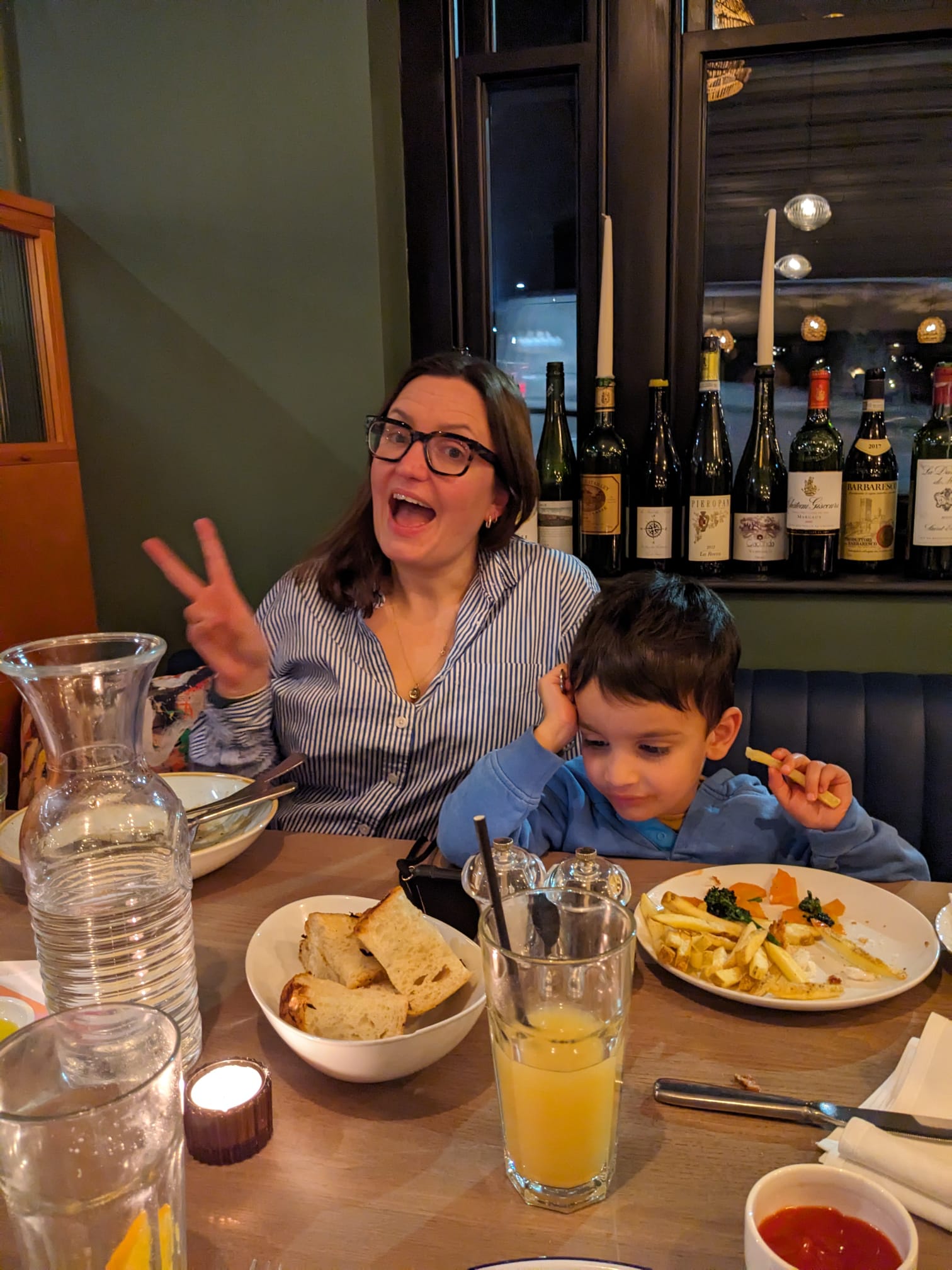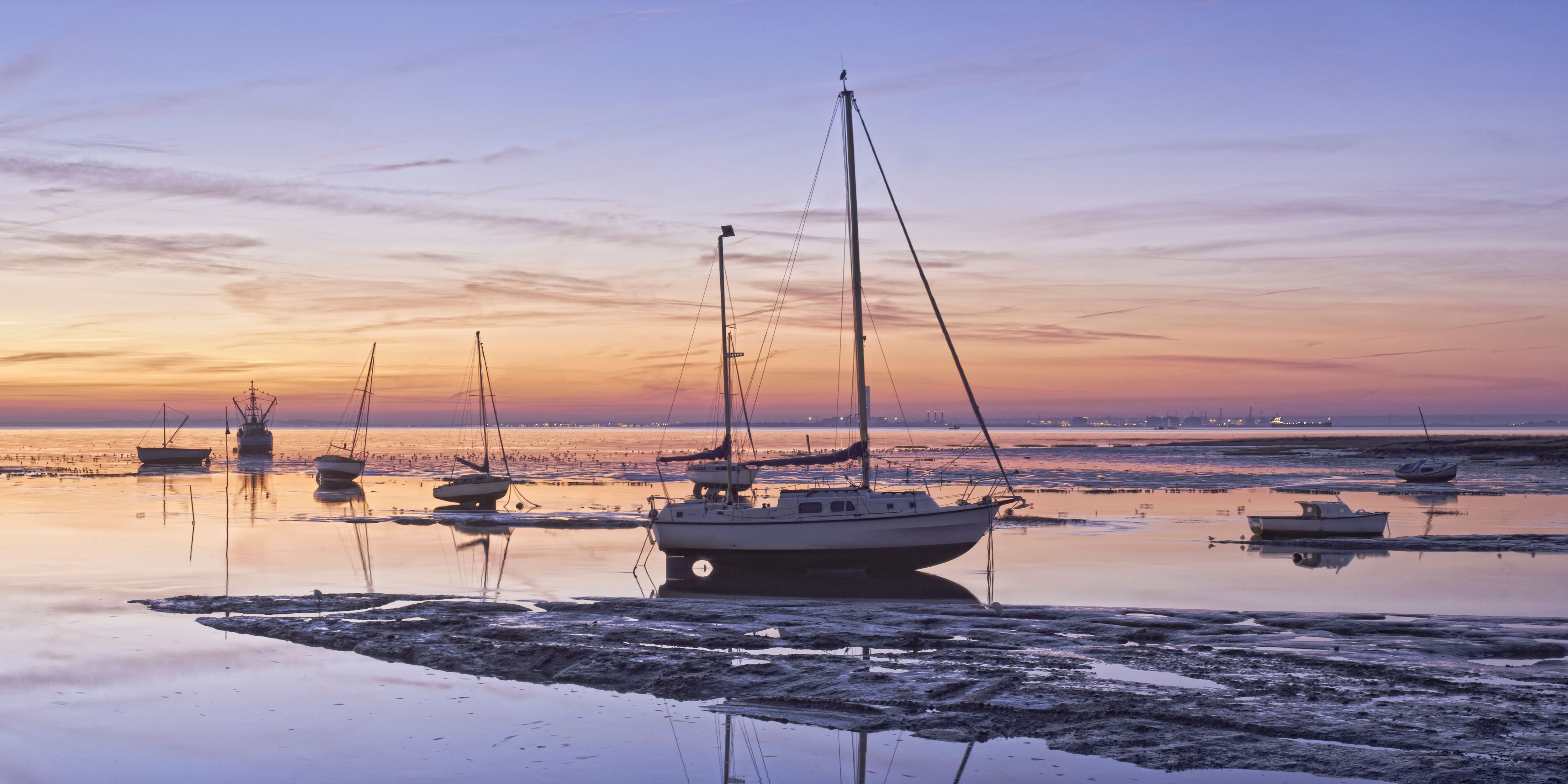Growing up, I always thought that I simply liked skimpy polyester dresses, matching my top to my earrings and dancing around my handbag in nightclubs. Twenty years later I realise I can blame my genes.
About five million Brits have taken a DNA test to learn more about their heritage and last year I joined them, doing a test with ancestry.com. Post-Brexit, I had hoped it might lead to another passport; instead it narrowed my genes down entirely to East Anglia. I was 83 per cent from a kidney-shaped area that stretched from below Ely in the north, skirting Colchester, Southend and as far into London as Bow; pretty much the Essex boundary. If I was surprised at such a high percentage, I shouldn’t have been: most people I’m related to hail from Britain’s most maligned county. I was born in Dagenham and grew up in Saffron Walden — even Spotify had my 2023 music taste as most aligned with people in Chelmsford. Friends were actually surprised to hear the DNA percentage wasn’t closer to 100.
And yet, shamefully, beyond zipping from London to see my parents, I don’t often stray too far into the county. But with such strong, newly discovered Essex genes I felt an odd sort of responsibility to show my (Surrey-born) husband and (London-born) son some of the places my ancestors called home. I wanted to do the grand tour, see some of Essex’s best bits, and find out a bit more about my family history while I was at it.

This article contains affiliate links that can earn us revenue
Our first stop is Southend, one of the UK’s newest cities, and the Roslin Beach Hotel — a slice of Miami on the seafront of Thorpe Bay. The last time I visited Southend, in about 2004, I checked into a Travelodge bleary-eyed after an evening spent dancing at some vile, sticky-floored joint called Varsity. This time is for grown-up vices: Roslin’s fun, scalloped tablecloths, baby-pink interiors and palm-tree prints alongside catches of the day, steaks and the hotel’s signature prawn cocktail (room-only doubles from £105, mains from £16; roslinhotel.com). Southend and its neon-lit arcades may have an (undeservedly) bad reputation, but this hotel is going a long way to undo that.
Advertisement
Up the road is Leigh-on-Sea, which is the des res of this part of the world: mudflat beaches, shops selling crystals, barista coffee shops and — that reliable middle-class barometer — plenty of Farrow & Ball. We wander through the town, walking down to the seafront to giggle at the pub Ye Olde Smack, wishing it were warm enough for mussels and an alfresco pint, before making our way inland to Chelmsford — the county town of Essex, but also its spiritual centre.
A walk along the Chelmer in the rain is woozily Proustian: glasses of wine being clinked at a bottomless brunch take me straight back to misspending my youth in … was it Yates’s Wine Lodge, Lloyds No 1 bar or the Rat & Parrot?
• 14 of the best hotels in Essex
In an unfortunate sign of my age, things I had known during my teenage years but since forgotten are represented in the excellent Chelmsford Museum. It also reveals history I had no idea about: Roman ruins, that Chelmsford was for few days during the Peasants’ Revolt of 1381 the capital of England, and that Dukes, a nightclub that I’m convinced I visited recently, actually shut in 2012 and now the signage and seats are a museum piece … howl.

I trace 200 years of my family history with the kind help of the Essex Record Office, who allow me to peer at dusty baptism records and marriage records from the mid-1800s to find my great-grandparents and many more generations further back. These “spinsters” and “bachelors” were wed in their early twenties, and had careers as bricklayers, bakers and labourers. (It’s interesting to see how my wine habit is also in my DNA: a couple of great-great-great-grandparents briefly ended up in jail for pub brawls.)
Advertisement
One location that came up again and again — aside from Maryland and Leytonstone, where a lot of my family came from — was Creeksea, a hamlet near the chichi town of Burnham-on-Crouch. The village is in the Crouch Valley, a particularly beautiful part of central Essex. It’s now home to dozens of vineyards, signs offering horse manure for a princely 25p and others saying “Green not greed”, protesting a giant housing development planned nearby.
Two great-great-grandparents were married in the All Saints Church in Creeksea, and one was a successful baker in the village (before “pissing it all away at the pub”, according to my dad’s mum). After some three-point-turns by the sailing club, we find the small, featureless church, notable in that it sits within a golf course, which is possibly the most Essex thing of this trip. It’s an eerie feeling knowing that ancestors more than 100 years ago stood in the same spot before tying the knot and going on to create my own family.
Our next stop is Mersea Island, the easternmost inhabited island in Britain, linked to the mainland via the Strood, a causeway that floods at high tide. This is the kind of place where houses are made of white or blue clapboard and everyone has a boat in their front garden: a little bit of the Hamptons in Essex. The White Hart Inn pub-with-rooms in West Mersea has seized upon the island’s picture-perfect looks and decked itself out in dark navy, green and funky geometric prints — I’m going to frame the pastel postcards I nicked (B&B doubles from £125, mains from £19.50; whitehartinnmersea.co.uk). The pub downstairs, a real local’s haunt, serves fresh Mersea oysters and — shock — Kentish sparkling wine, while the names of rooms upstairs all have links to the area and a local artist’s abstract paintings hanging on the walls. It couldn’t feel more modern Essex if it tried.

From Mersea’s Cudmore Grove Country Park, where we pick up oyster shells, we drive inland to Saffron Walden. We pass through Dunmow, where every four years Flitch trials still take place, which involves married couples competing for a side of bacon; and through pretty Finchingfield, often touted as one of Britain’s most picturesque village. As a moody teen, and as with most home towns, I thought “Walden” to be the most boring place in the universe and couldn’t wait to leave. However, as an adult I appreciate its gentle charms: woodland walks in the gracious Audley End Estate; the artisan stalls selling cheese, chutneys and coffee at the twice-weekly market, where the local boy Jamie Oliver often puts in an appearance; and St Mary’s, the largest church in the county.
Unbelievably in this market town, often voted one of this newspaper’s best places to live, there’s now Saffron Grange, a boutique vineyard growing pinot noir, seyval blanc, pinot meunier and chardonnay grapes for sparkling wine (the chalk up here is as good as Kent’s, I’m assured). A ride on the Audley End Miniature Railway, opposite the stately home, convinces my three-year-old son that his mother’s home town is anything but boring; after a walk through the estate’s enchanted woodland he actually stamps his feet and refuses to get in the car to go home.
Advertisement
You can’t talk about Essex without a few mentions of Oliver, who almost everybody drops into conversation at some point (he recently moved into an Elizabethan manor in Finchingfield, which I immediately check out on Zoopla — very Essex). We end our pilgrimage at the 16th-century Cricketers pub in Clavering, where Oliver learnt how to cook as a child (B&B doubles from £80, mains from £16; thecricketers.co.uk). It’s since been bought by the Chestnut group, which owns a clutch of characterful pubs-with-rooms in this area, but the food is no less exceptional than when he was in the kitchen: I order a Sunday roast of butternut squash and settle in by the fire with a glass of Saffron Grange’s Classic Cuvée, which makes my spine tingle. Two decades ago I’d have ordered a Lambrini (with a straw), but now I know better. There are some things you can’t blame on your DNA.
Cathy Adams was a guest of Visit Essex (visitessex.com)
Sign up for our Times Travel newsletter and follow us on Instagram and X
